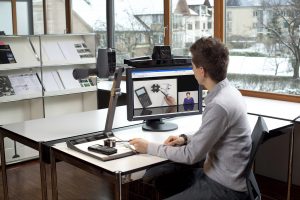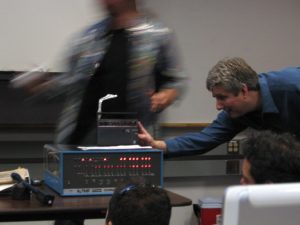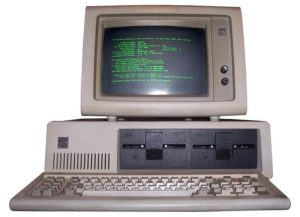We use our PCs to do almost everything. It is nearly impossible to imagine nowadays’ lifestyle without computers.

image source: https://search.creativecommons.org/photos/809a0767-262e-44d0-a57e-f55be1fc601b by WolfVision_vSolution
A personal computer (PC) is any computer that is intended to be operated directly by an end-user, with no intervening computer operator. The earliest electronic computers were not “personal” in any way: they were enormous, hugely expensive and required a team of engineers and other specialists to keep them running.
However, new technologies were making it possible to build computers that were smaller and more streamlined. One of the most significant inventions for the PC revolution was the microprocessor. It was the size of a thumbnail and it could do things the huge integrated-circuit chips could not do, making computers manufacture cheaper and easier than ever before.
The PC revolution

In 1975, MITS hired a pair of Harvard students named Paul G. Allen and Bill Gates to adapt the BASIC programming language for the Altair, one of the earliest microcomputers. In April 1975, the two young programmers formed a company of their own named Microsoft, which soon became an empire.
image source: https://search.creativecommons.org/photos/08d4016c-4a9c-4177-9e57-1633ce4efca9 by Marcin Wichary
The year after Microsoft started, two engineers in the Homebrew Computer Club in Silicon Valley named Steve Jobs and Stephen Wozniak built a homemade computer, called the Apple I, that would likewise change the world: It had more memory, a cheaper microprocessor and a monitor with a screen.

image source: https://search.creativecommons.org/photos/a5cfaf4d-3043-4cca-b5e6-45d082b3e01f. by SoniaT 360.
In April 1977, Jobs and Wozniak introduced the Apple II, which had a keyboard and a colour screen. Users could store their data on an external cassette tape. which were soon swapped for floppy disks. The company also encouraged programmers to create “applications” for it.
The PC revolution had begun. Soon companies like Xerox, Tandy, Commodore and IBM had entered the market, and computers became ubiquitous in offices and eventually homes.
1981, a year that rappresents the turning point for personal computers

PC IBM 5150
Image source: https://it.wikipedia.org/wiki/PC_IBM
In July 1981, the era of modern PC begins: the first IBM PC leaves the production line and is announced to the public in August under the acronym PC 5150. This product had not required any substantial technological investment, which had been put together in record time by a small group of young technicians in a distant and small IBM division in Florida, but that marked the beginning of a century-long revolution for the Computer. The IBM PC was not just a product but a catalyst for an entire industry that has now reached global dimensions. The PC then, this industrial atomic bomb, explodes in 1981 and its shock waves who knows for how many decades they will still feel. Much of the PC design was influenced by the DataMaster. The screen and keyboard were integrated into one unit. Because these functions were limiting, they became external drives on the PC.
info source: https://en.wikipedia.org/wiki/Personal_computer
